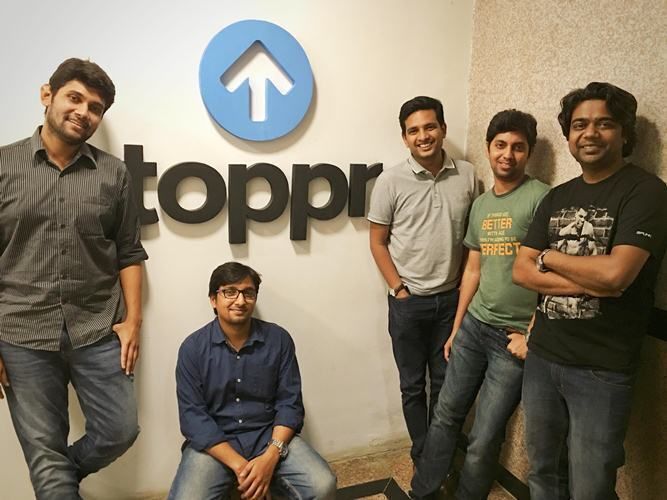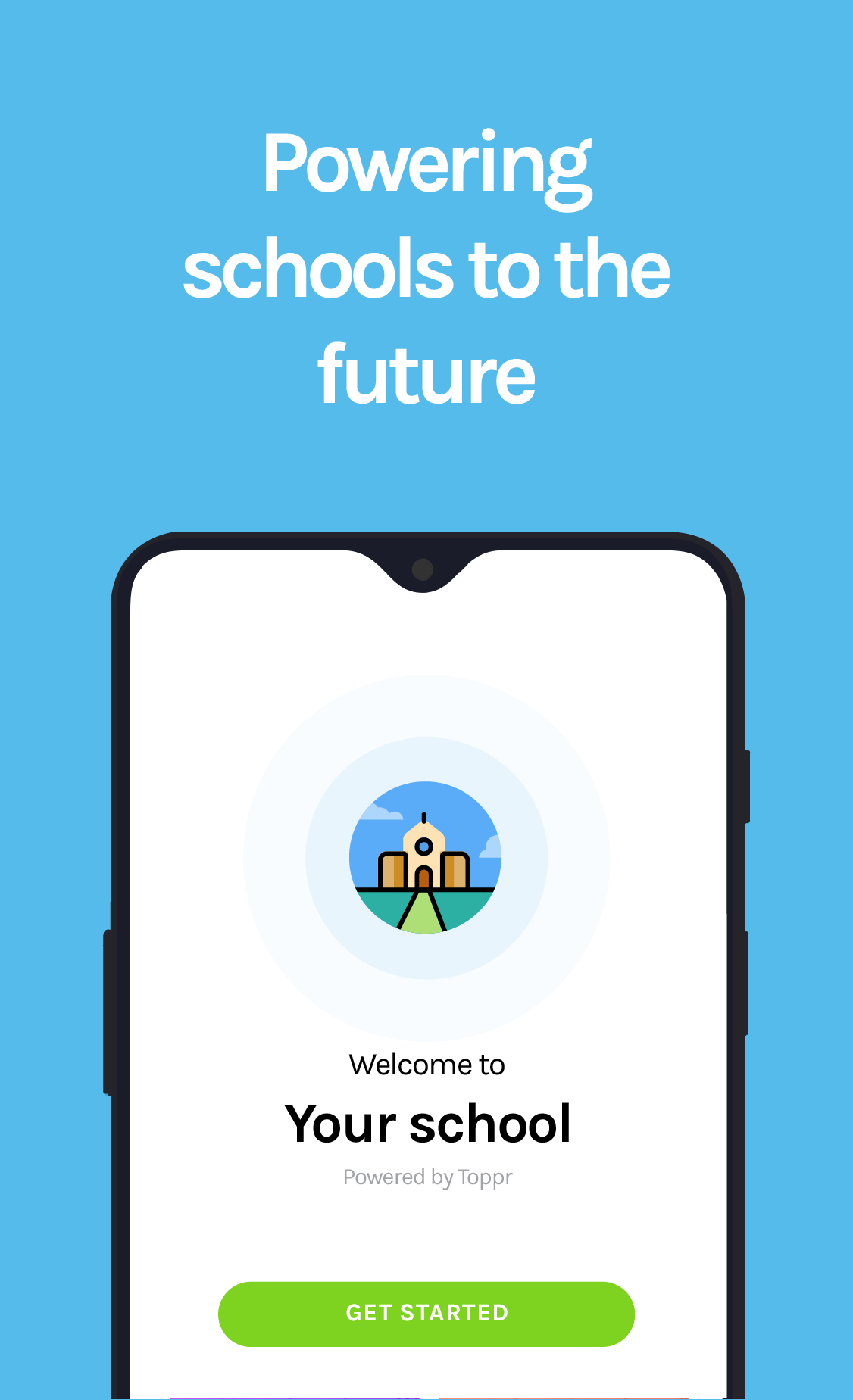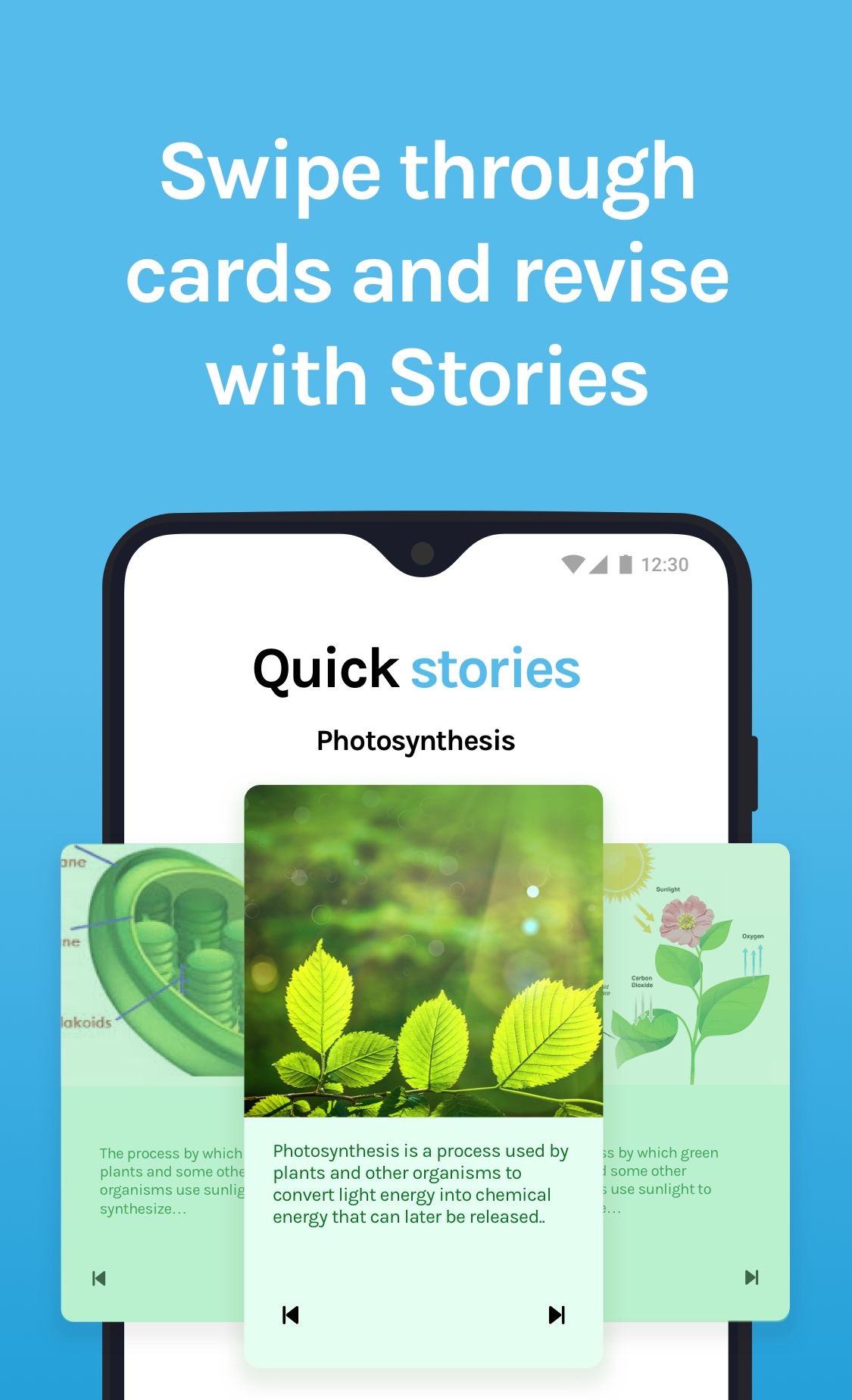Zishaan Hayath and Hemanth Goteti founded edtech platform in 2013 to focus on K-12 preparations. Sniffing success in the space, the Mumbai-based startup eventually decided to bring together different forms of learning under one roof.
“We took a 360 degree view of a K-12 student’s learning needs in order to define our roadmap. We also focussed on students preparing for Olympiads and competitive exams, and built technology to cater to their specific requirements,” says Zishaan, who is a serial entrepreneur.

To begin with, the co-founders, along with their first employee Joe Kochitty, started using technology to make learning personalised. Joe, Senior Vice President at Toppr now, explains that the first gap they set out to fill was to do with practice. They realised that students were spending 70 percent of their time practicing questions. “However, each student’s practice needs are unique,” says Joe.
A team of four then, they started building a community platform of subject experts involving teachers, college students, and professionals to freelance with the startup to help with the practice, as the team believed a personalisation engine needs a large content base.
While this unlocked the potential of thousands of experts who were able to earn in their free time, it also helped the team to launch the MVP for Class 11 and 12 in three months, to practice and learn better in just three months.
Today, Toopr claims to be having 35 million monthly active users.
The product
Toppr’s flagship product – the Learning app – is for after school learning. It offers live classes, practice, tests, ask a tutor, and recorded content.
It also offers School OS – an operating system for schools to function online, conduct live classes, assignments, attendance, byte-sized content pieces; Answer - homework and exam help app; Codr - an extracurricular 1-on-1 coding classes; and Community - powering content and tutor availability across products.
According to the team, these fall under four key foundational elements to their tech stack. These include Machine learning (ML)-based recommendation engine for adaptive learning. While solving question sets, every question that is recommended to the user is based on the history of attempts and accuracy. Each student gets a custom set of problems to solve based on their progress.
“Our questions have over 800 million lifetime attempts, which feeds the ML engine to recommend the next question to the student more accurately,” explains Hemanth.

The team
It has a Doubts engine to answer student’s doubts. Through user feedback, the team realised that students miss the support of a teacher or tutor outside school, especially when they were stuck with a particular problem. The team designed a two-step solution for this – artificial intelligence (AI) to answer questions automatically and 24X 7 tutor support to answer student queries.
“This was a complex product as it required building chat functionality, tutor matching and training, feedback and monitoring loops, which are highly customised. We spent a lot of time reviewing student messages manually before making the right product decisions and optimising for both stakeholders (students, tutors),” says Hemanth.
Toppr also offers a content engine for custom syllabus creation. It offers various forms of content such as questions, videos, stories, and concepts based on the topic, chapter, grade, etc.
The Photon tool is used for conducting live classes via embeddable video/audio layers, live polls, quizzes, classboards, and live chat. “We have used Photon to conduct more than 1.6 million live classes in schools since May 2020,” says Hemanth.
How the product evolved?
Joe says they first launched the Learning app with practice and tests as core features. “As students engaged with the app, we found more gaps. Some of these could be addressed with the infrastructure at that time, and some had to wait till internet penetration got better,” says Joe.
As the internet infrastructure in India improved, the team started streaming learning videos, and added video content to the library.
Zishaan says, the product kept evolving as the team had realised that education was an underserved market.
“As soon as we solved one need, we would discover another. So between improving existing features and discovering new needs, the product has been moving forward sprint by sprint, month by month,” says Zishaan.

Feedback loops
Rajshekhar Ratrey, SVP, Product, Toppr, explains, feedback is the most important factor for product development.
“Immediately after a launch, we prefer to hear directly from the users. As adoption increases, the data provides valuable insights. All of this plus intuitions built over the years help us to identify new problems to solve. We built the doubts feature and added videos to our library when we saw a growing demand among our users,” says Rajshekhar.
Adding to this, Joe explains, while the user feedback was great, a few features either failed to gain traction or were no longer used as the product evolved.

“We had launched a discuss feature for students to interact and answer each other's questions. However, it was a compromise on question and answer quality compared to our question bank, which led to low adoption among users. Further, content moderation was a challenge at a larger scale. Hence, we discontinued it,” says Joe.
The team also realised that many students would use web search whenever they were stuck or wanted to know more about the subject. Thus, Toppr had to provide the right content to students in order to drive organic traffic.
“We optimised our vast content for web and made Toppr pages SEO and mobile-friendly to improve our SERP ranking, CTR, and impressions. As a result, our traffic grew 9x in one year. We have become the #1 destination for K-12 students in India, with 35 million monthly active users,” says Hemanth.
The pandemic push
During the pandemic, the number of education apps and platforms have been fast increasing. A report by BARC India and Nielsen reveals that there has been a 30 percent increase in the time spent on education apps on smartphones since the lockdown last year.
Edtech platforms such as , , , and DronStudy are looking at creating at least 3,000 new jobs over the next year.
Edtech unicorn BYJU’S saw 7.5 million new users on its platform after it started offering free access to content. The time spent on its app increased from 70 minutes pre-lockdown to 91 minutes during the lockdown. Unacademy also claims to have recorded 1.4 billion watch minutes. However, the core differentiator for Toppr has been its personalised learning outcomes.
Zishaan says the team will continue to innovate based on user needs and new technologies that emerge. He explains there is a huge potential for growth and to build new features by leveraging the large student community such as rank discovery, deficiency analysis based on assessments, multiplayer learning games, etc.
“School OS brings a key stakeholder in the learning system -- the schools -- to the table. Right now, after-school learning and in-school learning are disjoint sets with zero visibility of what happens in each bubble. This is the first time a B2B school product is experiencing a B2C quality product. Moreover, we are in a unique position where we cater to in-school as well as after-school learning. Unifying both is something that we are very excited about,” adds Zishaan.
Edited by Megha Reddy
Link : https://yourstory.com/2021/07/product-roadmap-edtech-startup-toppr-personalised-learning-k-12
Author :- Sindhu Kashyaap ( )
July 21, 2021 at 05:20AM
YourStory




